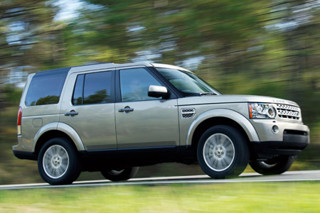Review
Inside, the cabin has also been improved. Matthew Taylor, Land Rover managing director, says: "This is where our customers spend most of their time with the car and the area where we knew there was room for improvement. Premium car buyers expect premium cabins."
Facia, instruments, switchgear, door trims, fabrics and seats are new.
As before, there are three engines – 1.8 and 2.5 petrol and a 2.0 Td4 diesel – available with a five-speed manual and five-speed automatic in 3dr, 5dr, softback, hardback and station wagon variants. The 2.5-litre V6 Sport auto we tested remains largely unchanged mechanically, the gearbox has been modified to make it smoother.
Freelander is not cheap, but this compact 4x4 has full-time four-wheel drive and a cabin full of electronic wizardry. There's hill decent control and electronic traction control to help it wade through water then climb and descend slippery slopes. All this in a car that will spend most of its life on Tarmac.
But the Freelander's off-road engineering does translate into real on-road driving benefits. For example, the high driving position allows better visibility and the 4x4 system offers road- holding confidence in poor conditions.
Land Rover says the Freelander offers the benefits of a premium off-roader with the handling and practicality of a premium saloon. In other words, it's an over-engineered indulgence of a soft-roader.
Strengths: Badge, highly capable off- roader
Weaknesses: Thirsty engine, lacks torque
Opportunities: Attractive product in growing sector
Threats: History of build quality issues
The USP: Over engineered, under utilised
Price: £23,395 (3dr Sport)
Engine: 2489cc transverse V6 24v 177bhp, 177lb-ft Transmission: 5sp auto
Performance: 0-60mph, 10.1sec; top speed 113mph
Servicing: 4 years/50,000 miles
Efficiency: 22.7mpg; 298g/km CO2
CAP RV (3yr/30k): £9,350 (40%)
Rivals: Honda CR-V, Hyundai Sant Fe, Jeep Cherokee, Nissan X-trail
Factsheet
No information available.














